Key Buddhist Practices
Posted on September 5th, 2011
Article 9
Getting Clear About Our Aims
The Buddha appeared in the world to lead other people out of their misery and suffering and to show them the way to the highest happiness and peace.ƒÆ’-¡ƒ”š‚ Out of his great compassion, he taught these causes and conditions extensively to the world for 45 years, so that people could understand what courses of action should be avoided and what courses of action should be pursued, if one seeks to be happy and prosperous.
Thus, our ultimate objective in learning the BuddhaƒÆ’‚¢ƒ¢-¡‚¬ƒ¢-¾‚¢s teachings should be to learn how to distinguish the ways that are harmful and destructive, from the ways that are helpful and beneficial, the ways that lead to suffering from the ways that lead to happiness and peace.
Basics of Buddhism
Buddhism is about self-liberation through the development of wisdom.ƒÆ’-¡ƒ”š‚ Its premise is the elimination of greed, attachment, and hatred.ƒÆ’-¡ƒ”š‚ These are achieved by cultivating non-greed (generosity),non-attachment (letting go), and non-hatred (loving-kindness) through Buddhist meditation practices and following the Dhamma.ƒÆ’-¡ƒ”š‚
As explained in several suttas, including the Maha Prajna (a Mahayana sutra), it is necessary for us to (a) concentrate our minds on the perfect wisdom (the cognition of enlightenment) while staying in the present moment; (b) focus on thoughts of compassion; (c) carry out wholesome activities; and (d) learn the skilful means of non-greediness, non-attachments, and the emptiness (sunyata).ƒÆ’-¡ƒ”š‚ Sunyata is not empty mind; it is the emptiness from greed and attachments.ƒÆ’-¡ƒ”š‚ The latter is one of the most misunderstood and misinterpreted concepts; this misunderstanding often confuses and discourages individuals from following Buddhism.ƒÆ’-¡ƒ”š‚
Many wrongly believe that when one attains Arhathood, his or her mind becomes ƒÆ’‚¢ƒ¢-¡‚¬ƒ”¹…”emptyƒÆ’‚¢ƒ¢-¡‚¬ƒ¢-¾‚¢.ƒÆ’-¡ƒ”š‚ On the contrary, such ƒÆ’‚¢ƒ¢-¡‚¬ƒ…-emptinessƒÆ’‚¢ƒ¢-¡‚¬ƒ”š‚ refers to emptiness from all ƒÆ’‚¢ƒ¢-¡‚¬ƒ…-defilementsƒÆ’‚¢ƒ¢-¡‚¬ƒ”š‚.ƒÆ’-¡ƒ”š‚ When released from all defilements the mind becomes so sharp and insightful; it is also a universal reality behind phenomena.ƒÆ’-¡ƒ”š‚
In contrast to Theravada Buddhism and its teaching, Maha Prajna sutra in Mahayana Buddhism stresses the importance of learning he practices of ƒÆ’‚¢ƒ¢-¡‚¬ƒ…-bodhisattvasƒÆ’‚¢ƒ¢-¡‚¬ƒ”š‚ and attaining the nibbaƒÆ’†’ƒ”š‚±na in this life itself.ƒÆ’-¡ƒ”š‚ Nonetheless, such methods can be incorporated to cultivate self-goodness and wisdom.ƒÆ’-¡ƒ”š‚ The ultimate goal of all these practices is to attain perfection in the three virtues, eventually leading to nibbana.ƒÆ’-¡ƒ”š‚ This begins with the observance of the Five-Precepts as the most fundamental step of practicing Buddhism. In Theravada Buddhism, meritorious or virtuous acts create the setting for oneƒÆ’‚¢ƒ¢-¡‚¬ƒ¢-¾‚¢s realization. However, one has to realize the Four Noble Truths to attain nibbaƒÆ’†’ƒ”š‚±na, which requires listen and practice of Dhamma. ƒÆ’-¡ƒ”š‚ The latter explains the path to nibbaƒÆ’†’ƒ”š‚±na (Suthmaye gnannan), and thus facilitates the realization of the Truth. ƒÆ’-¡ƒ”š‚ For instance, one has to have an approximate understanding about nibbaƒÆ’†’ƒ”š‚±na (without any assumptions, through experience) before one decides to enter the path.ƒÆ’-¡ƒ”š‚ Without that understanding, one is likely to be on the path that leads to suffering.
Practice of BuddhismƒÆ’-¡ƒ”š‚ ƒÆ’-¡ƒ”š‚ ƒÆ’-¡ƒ”š‚ ƒÆ’-¡ƒ”š‚ ƒÆ’-¡ƒ”š‚ ƒÆ’-¡ƒ”š‚ ƒÆ’-¡ƒ”š‚ ƒÆ’-¡ƒ”š‚ ƒÆ’-¡ƒ”š‚ ƒÆ’-¡ƒ”š‚ ƒÆ’-¡ƒ”š‚ ƒÆ’-¡ƒ”š‚
Buddha did not create fear or force blind faith on people through threats or any other means.ƒÆ’-¡ƒ”š‚ Instead, he advised people to stay within the Middle Path (i.e., avoid extremes), practice the Noble Eightfold Path, meditate, and adhere to Dhamma.ƒÆ’-¡ƒ”š‚ He encouraged followers to appreciate the value of good conduct and right livelihood, give up harmful and evil practices, and understand the effects of such conduct.
Buddhist teachings illustrate that the spiritual transformation rests on three foundations: Sila (morality), Samadhi (mental development), and Pagnna (wisdom). ƒÆ’-¡ƒ”š‚ All of these have much deeper meanings than their English translations.ƒÆ’-¡ƒ”š‚ These are the basic elements needed to achieve a happy and peaceful life.
The unity of Buddhism is ensured by the universal admiration of the historic Buddha and the acceptance of the Enlightenment and nibbaƒÆ’†’ƒ”š‚±naas the ultimate goals of such practices.ƒÆ’-¡ƒ”š‚ The purpose of oneƒÆ’‚¢ƒ¢-¡‚¬ƒ¢-¾‚¢s current existence is implied in parattham patipajjatha, ƒÆ’‚¢ƒ¢-¡‚¬ƒ…-serve for the benefit of others.ƒÆ’‚¢ƒ¢-¡‚¬ƒ”š‚ƒÆ’-¡ƒ”š‚ The underlying principles of Buddhism are to avoid wrongdoing, perform wholesome deeds, and keep the mind pure, as exemplified in Pali by ƒÆ’‚¢ƒ¢-¡‚¬ƒ…-sabbha papassa akranam, kusalassa upasampada, sachitta pariyo dapanam, etham Buddhanusasanam.ƒÆ’‚¢ƒ¢-¡‚¬ƒ”š‚
The Five Precepts
The BuddhaƒÆ’‚¢ƒ¢-¡‚¬ƒ¢-¾‚¢s teaching is not a system of salvation by faith but a path to enlightenment and liberation from suffering.ƒÆ’-¡ƒ”š‚
The path unfolds in three main stages or virtues: moral discipline (Sila), concentration (Samadhi), and wisdom (PaƒÆ’†’ƒ”š‚±ƒÆ’†’ƒ”š‚±a).ƒÆ’-¡ƒ”š‚ OneƒÆ’‚¢ƒ¢-¡‚¬ƒ¢-¾‚¢s progress in each of these three paths is dependent upon its antecedent events (e.g., concentration upon moral discipline; wisdom upon concentration).ƒÆ’-¡ƒ”š‚ The foundation for the completion or realization of the entire path lies in oneƒÆ’‚¢ƒ¢-¡‚¬ƒ¢-¾‚¢s training in moral discipline.ƒÆ’-¡ƒ”š‚ The moral virtue is internalized by observing the precepts, which provide guidelines for virtuous conduct. The most basic ethical code found in the BuddhaƒÆ’‚¢ƒ¢-¡‚¬ƒ¢-¾‚¢s teaching is the Five Precepts (also called Panchasila):
- I undertake the training rule to abstain from taking life;
- I undertake the training rule to abstain from taking what is not given;
- I undertake the training rule to abstain from sexual misconduct;
- I undertake the training rule to abstain from lying, making untrue statements ƒÆ’‚¢ƒ¢-¡‚¬ƒ¢¢”š¬‚¢false speech; and
- I undertake the training rule to abstain from liquors, wines, and all other intoxicants, which are the basis for heedlessness.ƒÆ’-¡ƒ”š‚
To explain the first precept completely, ƒÆ’‚¢ƒ¢-¡‚¬ƒ…-That Arahat person, until his death, does not kill any being, has refrained from using any weapon, poison, or devices that harm any being in any manner, any ill deed, word or thought, and lives with full compassion and wishes for the well-being of others.ƒÆ’‚¢ƒ¢-¡‚¬ƒ”š‚
Goals of the Five-Precepts
The goal of the practice of the Five Precepts is to live a balanced, benevolent life.ƒÆ’-¡ƒ”š‚ The aim is to practice these so that they become effortless activities embedded in our day-to-day activities.ƒÆ’-¡ƒ”š‚ As such, the practitioner will never deviate from the Five Precepts, which will become the basis of positive thinking, speaking, and actions. The Buddhist Suttas exemplify this aspect of purification and accomplishment of the practice of Sila.ƒÆ’-¡ƒ”š‚
The Five Precepts also serve as the core of the training in moral discipline.ƒÆ’-¡ƒ”š‚ They are intended to produce, through developed methodical practices, inner purity and motivation that manifest in wholesome bodily and verbal conduct.ƒÆ’-¡ƒ”š‚ The adherence to the Five-Precepts is to be renewed by reciting them each day as part of oneƒÆ’‚¢ƒ¢-¡‚¬ƒ¢-¾‚¢s daily practices, as one does of the Three Refuges.ƒÆ’-¡ƒ”š‚ However, in logical terms, if one practices the Five Precepts all the time, one can argue that there is no rationale for ƒÆ’‚¢ƒ¢-¡‚¬ƒ…-renewingƒÆ’‚¢ƒ¢-¡‚¬ƒ”š‚ them on a daily basis.ƒÆ’-¡ƒ”š‚ Nevertheless, constant practice of the Five Precepts should be a goal of Buddhists.ƒÆ’-¡ƒ”š‚
There are two key aspects of Buddhist precepts for lay Buddhists: a). to engage in good deeds (Dana, Sila and Bhavana), and b). not to engage in bad deeds: (physically and mentally, evil and unwholesome things).ƒÆ’-¡ƒ”š‚ What is important is to engage in good deeds and refrain from bad deeds now; not to postpone the doing or not doing of such things.ƒÆ’-¡ƒ”š‚ This is illustrated in the Dhammapada in the verses:
ƒÆ’‚¢ƒ¢-¡‚¬ƒ…-Appamado Amatha Padan, Pamado Machchuno Padan
Appamaththa ne miyanthi,ƒÆ’-¡ƒ”š‚ Yepamaththa yatha mathaƒÆ’‚¢ƒ¢-¡‚¬ƒ”š‚ (Lord Buddha).
Appamado Amatha Padan ƒÆ’‚¢ƒ¢-¡‚¬ƒ¢¢”š¬…” Not being late (to attain nibbana) gives the foundation to reach the sweetest attainment (amatha/amurtha/nibbana)
Pamado Machchuno Padan ƒÆ’‚¢ƒ¢-¡‚¬ƒ¢¢”š¬…” Being late (to attain nibbana) is the foundation to unstoppable suffering and deaths
Appamaththa ne miyanthi ƒÆ’‚¢ƒ¢-¡‚¬ƒ¢¢”š¬…” Thus, the one who is not late wonƒÆ’‚¢ƒ¢-¡‚¬ƒ¢-¾‚¢t die again, it would be the final death
Yepamaththa yatha matha ƒÆ’‚¢ƒ¢-¡‚¬ƒ¢¢”š¬…” The one who is late is like the one who keeps dying.ƒÆ’-¡ƒ”š‚
This stanza emphasizes that postponing things in our lives will not do any good to us.ƒÆ’-¡ƒ”š‚ Our lifetime is limited; we need to do our duties to ourselves, and others, now.ƒÆ’-¡ƒ”š‚ No one knows what will happen to us tomorrow or in the future, no one knows how long he or she will live and no one even can guarantee life tomorrow.ƒÆ’-¡ƒ”š‚ Things we need to do must be done promptly.
Advanced Buddhist Practices
The practice of the Eight Precepts, ƒÆ’‚¢ƒ¢-¡‚¬ƒ…-Ata SilƒÆ’‚¢ƒ¢-¡‚¬ƒ”š‚ or ƒÆ’‚¢ƒ¢-¡‚¬ƒ…-Ashtanga SilaƒÆ’‚¢ƒ¢-¡‚¬ƒ”š‚, generally is observed on Uposatha days.ƒÆ’-¡ƒ”š‚ However, aajiva ashtamaka sila is not restricted to Uposathadays.ƒÆ’-¡ƒ”š‚ The Ten Precepts is a more advanced Buddhist practice.ƒÆ’-¡ƒ”š‚ Buddhists embark on observing these extra precepts once a month (every full moon day in traditionally Buddhist countries), or several times a month
(Uposatha days).
However, there does not seem to be a specific reason to observe such practices on a given day of the month, except for establishing the self-discipline to do so on a regular basis.ƒÆ’-¡ƒ”š‚ For example, the elements of Right Speech should be practiced at all times (i.e., abandoning abusive speech, false speech, divisive speech, gossip, and redundant chatter). In fact, this is one of the reasons ajiva ashtamaka sila is not meant to be observed only on Uposatha days and typically is taken for long periods at a stretch or for life.ƒÆ’-¡ƒ”š‚ The same is true for the practice of Right Livelihood, Right Understanding, and Right Behaviour. ƒÆ’-¡ƒ”š‚ In contrast, ordained monks have a minimum of 227 Vinaya rules by which to abide.ƒÆ’-¡ƒ”š‚ From a practical point of view, if one can protect (or control) ones thoughts, words and deeds from defilements, one does not need to worry about the exact terminology or wordings of Sila (as described in tripitaka).
The Eight Precepts
In many Buddhist countries during Buddhist holidays such as Vesak and full moon days, it is common for lay Buddhists to observe a more stringent code of discipline, consisting of the Eight Precepts (Ata Sil). Although the Eight Precepts are modelled on the basic ethical code of monks, most laypeople observe them for only a 24-hour period.ƒÆ’-¡ƒ”š‚ The first five of the Eight Precepts are identical to the Five Precepts, except that the third is modified to: ƒÆ’‚¢ƒ¢-¡‚¬ƒ…-I accept the training rule to abstain from all sexual behaviour.ƒÆ’‚¢ƒ¢-¡‚¬ƒ”š‚ƒÆ’-¡ƒ”š‚ This requires abstinence from all aspects of sexual behaviour, including hugging, kissing, and holding hands.ƒÆ’-¡ƒ”š‚ The additional three precepts are:
ƒÆ’-¡ƒ”š‚ ƒÆ’-¡ƒ”š‚ ƒÆ’-¡ƒ”š‚ ƒÆ’-¡ƒ”š‚ ƒÆ’-¡ƒ”š‚ ƒÆ’-¡ƒ”š‚ ƒÆ’-¡ƒ”š‚ ƒÆ’-¡ƒ”š‚ ƒÆ’-¡ƒ”š‚ 1.ƒÆ’-¡ƒ”š‚ ƒÆ’-¡ƒ”š‚ ƒÆ’-¡ƒ”š‚ ƒÆ’-¡ƒ”š‚ ƒÆ’-¡ƒ”š‚ ƒÆ’‚¢ƒ¢-¡‚¬ƒ…-I accept the training rule to abstain from food at improper times.ƒÆ’‚¢ƒ¢-¡‚¬ƒ”š‚ƒÆ’-¡ƒ”š‚ This means that no solid food, including milk and milk products is be consumed between the mid-day and dawn of the following day (approximately 6 am).ƒÆ’-¡ƒ”š‚ Afternoon, one may drink any beverage, such as tea, coffee, cocoa, and fruit juices.ƒÆ’-¡ƒ”š‚ A plain vegetable broth, without the pulp, is also acceptable.ƒÆ’-¡ƒ”š‚ Because no evening meal is consumed, those observing these precepts should eat a substantial lunch.ƒÆ’-¡ƒ”š‚ With a little determination to resist the force of habit, one will find that this meal suffices for the rest of the day.
ƒÆ’-¡ƒ”š‚ ƒÆ’-¡ƒ”š‚ ƒÆ’-¡ƒ”š‚ ƒÆ’-¡ƒ”š‚ ƒÆ’-¡ƒ”š‚ ƒÆ’-¡ƒ”š‚ ƒÆ’-¡ƒ”š‚ ƒÆ’-¡ƒ”š‚ ƒÆ’-¡ƒ”š‚ 2.ƒÆ’-¡ƒ”š‚ ƒÆ’-¡ƒ”š‚ ƒÆ’-¡ƒ”š‚ ƒÆ’-¡ƒ”š‚ ƒÆ’-¡ƒ”š‚ ƒÆ’‚¢ƒ¢-¡‚¬ƒ…-I accept the training rule to abstain (a) from dancing, singing, and participating in customary musical and theatrical entertainment (listening to instrumental music and attending shows and entertaining ceremonies), and (b) from the use of jewellery, cosmetics, and beauty lotions.ƒÆ’‚¢ƒ¢-¡‚¬ƒ”š‚ One should aim to refrain from participating in such activities and attending performances involving such activities. This is applicable to laypeople and monks alike.ƒÆ’-¡ƒ”š‚ However, this adherence to this precept does not prohibit women from wearing earrings permanently secured on their ears or, if they so wish, from wearing their wedding bands, wrist watches, and such ornaments.ƒÆ’-¡ƒ”š‚ However, it excludes other non-essential cosmetic practices, including wearing perfumes, makeup, and other toiletries, but not medications, deodorants, or skin lotions needed to counter a dry-skin condition (common sense).
ƒÆ’-¡ƒ”š‚ ƒÆ’-¡ƒ”š‚ ƒÆ’-¡ƒ”š‚ ƒÆ’-¡ƒ”š‚ ƒÆ’-¡ƒ”š‚ ƒÆ’-¡ƒ”š‚ ƒÆ’-¡ƒ”š‚ ƒÆ’-¡ƒ”š‚ ƒÆ’-¡ƒ”š‚ 3.ƒÆ’-¡ƒ”š‚ ƒÆ’-¡ƒ”š‚ ƒÆ’-¡ƒ”š‚ ƒÆ’-¡ƒ”š‚ ƒÆ’-¡ƒ”š‚ ƒÆ’‚¢ƒ¢-¡‚¬ƒ…-I accept the training rule to abstain from the use of high and luxurious beds and seats.ƒÆ’‚¢ƒ¢-¡‚¬ƒ”š‚ƒÆ’-¡ƒ”š‚ One should avoid sitting or using especially soft, high, or luxurious seats.ƒÆ’-¡ƒ”š‚ The typical western bed is not considered ƒÆ’‚¢ƒ¢-¡‚¬ƒ…-high and luxurious,ƒÆ’‚¢ƒ¢-¡‚¬ƒ”š‚ but if one wishes to be extra-scrupulous, one might sleep in a sleeping bag, on a mat, or on a rug spread on the floor.ƒÆ’-¡ƒ”š‚ The aim is to not to wilfully discomfort oneself, but rather to be practical.
Once administered, the Eight Precepts should be observed until sunrise on the following day or at least until sunset of that day.ƒÆ’-¡ƒ”š‚ At sunrise, one verbally relinquishes the Eight PreceptsƒÆ’‚¢ƒ¢-¡‚¬ƒ¢¢”š¬‚either to oneself or to another person, preferably before a Buddha imageƒÆ’‚¢ƒ¢-¡‚¬ƒ¢¢”š¬‚and switches to the Five-Precepts.ƒÆ’-¡ƒ”š‚ Buddhists assume that the advancement in the practices of Buddhism leads to further accumulation of good kamma.ƒÆ’-¡ƒ”š‚
An important thing to remember when observing the Eight-Precepts or Ten-Precepts is to think that one following the noble beings such as the Buddha and Arahats, who perfected these practices. This is important to keep in mind because if one breaks these precepts during the observance, it is thought to generate a negative kamma.ƒÆ’-¡ƒ”š‚ Whereas, observing precepts for even short periods generate good kamma.
These practices are consistent with the Middle Path that leads to understanding of the Four Nobel Truths. Two eightfold paths have been described: one is worldly and the other facilitates attaining nibbana.ƒÆ’-¡ƒ”š‚ The worldly path helps one to gain worldly happiness.ƒÆ’-¡ƒ”š‚ The one that leads nibbana is to be realized from engaging with Dhamma, which explains the path to nibbaƒÆ’†’ƒ”š‚±na.ƒÆ’-¡ƒ”š‚ The Eightfold Noble Path leading to happiness and nibbaƒÆ’†’ƒ”š‚±na includes the steps needed to realization, initiated with Samatha (based on wisdom ƒÆ’‚¢ƒ¢-¡‚¬ƒ¢¢”š¬‚ Neththipakaranaya page 67 Buddhajayanthi tripitaka series), and substantiated with the practice of Vipassana meditation. Thus, the above-mentioned foundation, in conjunction with the Eightfold Noble Path and the practice of Vipassana meditation paves the way to develop Wisdom and eliminate suffering, leading to the attainment of the supreme nibbaƒÆ’†’ƒ”š‚±na.
ƒÆ’-¡ƒ”š‚ ƒÆ’‚¢ƒ¢-¡‚¬ƒ…-To speak no ill will, to do no harm, to practice self-restraint according to the fundamental precepts, to be moderate in eating, to live in seclusion, to devote oneself to higher consciousness; this is the Teaching of the BuddhaƒÆ’‚¢ƒ¢-¡‚¬ƒ”š‚ (Dhammapada)
Note: Some of the material, pictures, poems, and stanzas in these writings may have been published previously, including on the Internet (such as http://what-buddha-said.net and Buddha.direct.net) or obtained from various sources (modified with permission).ƒÆ’-¡ƒ”š‚ The author sincerely thanks all contributors of such materials for their generosity. ƒÆ’-¡ƒ”š‚ We anticipate that the brief articles on meditation, Buddhism, and Buddhist philosophy that appear in this column will initiate healthy and positive discussions.
May the Noble Triple Gem bless you ƒÆ’-¡ƒ”š‚
Sunil J. Wimalawansa
Professor of Medicine, Endocrinology, Physiology & Integrative Biology ƒÆ’-¡ƒ”š‚
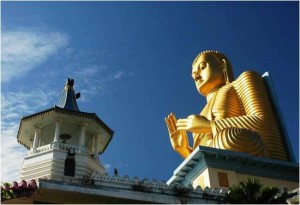
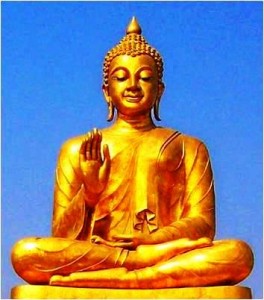
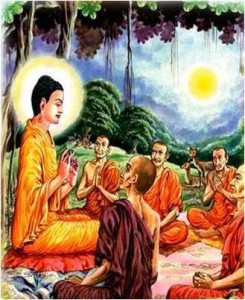

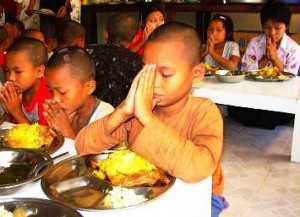
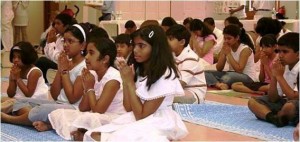
September 5th, 2011 at 10:51 pm
The Eightfold Noble Path is also relevent to the entire nation when understood in the context.
September 6th, 2011 at 12:14 am
Buddhist teachings are very good to make people civilised. Unfortunately, in the real world, there are many people as well as societies that do not have or respect Buddhist values. Eg Hitler, Prabakaran, Spanish, Muslim and European Invaders. In fact Nalanda Buddhists, Buddhists in the silk route, Mayans, Aztecs, Tibetians etc would not have been saved with Buddhist teachings To a certain extent, pain, suffering is in the mind. Suffering could be reduced with character development, mind control, appropriate education, and using science and technology. Religion unfortunately is a dangerous mind virus that clouds rational thinking. We should learn how to survive in a highly competitive world rather than learn to be happy, end suffering and end up as poorest of the poor or end up losing our living space completely or end up being killed as happened to Nalanda Buddhists.
In the real world it is ‘survival of t, fittest and not the survival of the happiest or with the least suffering.
In the modern highly competitive world, it is dangerous to blindly hang on to an Indian religion that has even been dumped by Indians.
Good things on Buddhism are precepts and teaching on morality which we should promote. As for reduction of suffering, make use of modern education and science and technology, rather than use Indian methods that even Indians do not follow any more.
September 6th, 2011 at 3:35 am
Ben Silva,
If you follow the five Precepts, you won’t even think about infuriate speeches against innocent minorities of Sri Lanka. If you really practise those Precepts, you never talk about nalanda buddhists, tibetan buddhists, Spanish, Hitler, etc.
You are praising the Noble Truth and wish to be practised by Sri Lankans, but in other sense you are instigating hatred against fellow Sri Lankans.
You are attacking Indian religions, but you forgot to say Buddhism where it came from? Actually, you won’t ban the Buddhist pilgrims who flock to India day by day.
“To speak no ill will, to do no harm, to practice self-restraint according to the fundamental precepts, to be moderate in eating, to live in seclusion, to devote oneself to higher consciousness; this is the Teaching of the Buddha” (Dhammapada)
September 6th, 2011 at 3:52 am
One of the Panchaseela is abstaining from taking liquor.
Unfortunately, majority of the Sri Lankan Buddhists are drunkards when you compare to other communities.
Why can’t ban the liquor industry by SLG?
September 7th, 2011 at 4:15 am
Ben Silva,
Suffering is due to few major problems such a loss of a loved one, sudden serious dcease, aging and death. You , as usual proudly proclaim,
“Suffering could be reduced with character development, mind control, appropriate education, and using science and technology”.
Conceiving so his foolishness
the fool is thereby wise,
while ‘fool’ is called that fool
conceited that he’s wise.
Though all through life the fool
might wait upon the wise,
no more Dhamma can he sense
than spoon the taste of soup.
-Dhammapada
September 7th, 2011 at 6:49 am
A fine analysis by Prof. Wimalawansa, for which we thank him.
In answer to some concerns pointed out by some readers, I have this to say.
Buddhism & Buddhist practices can easily co-exist with modern defence systems. In Buddhist Lanka, a soldier will not kill wantonly and will do so only to defend the millions in his country who do want peace and also to keep our Democracy intact. Every effort must be made to keep Law & Order in Buddhist countries and Prevention of Crime must be highlighted by GoSL and by formation of Neighborhood Watches. Prevention of Poverty is as important !
As a Buddhist country, we have to have very strong law enforcement and crime prevention for us to live in peace with each other.